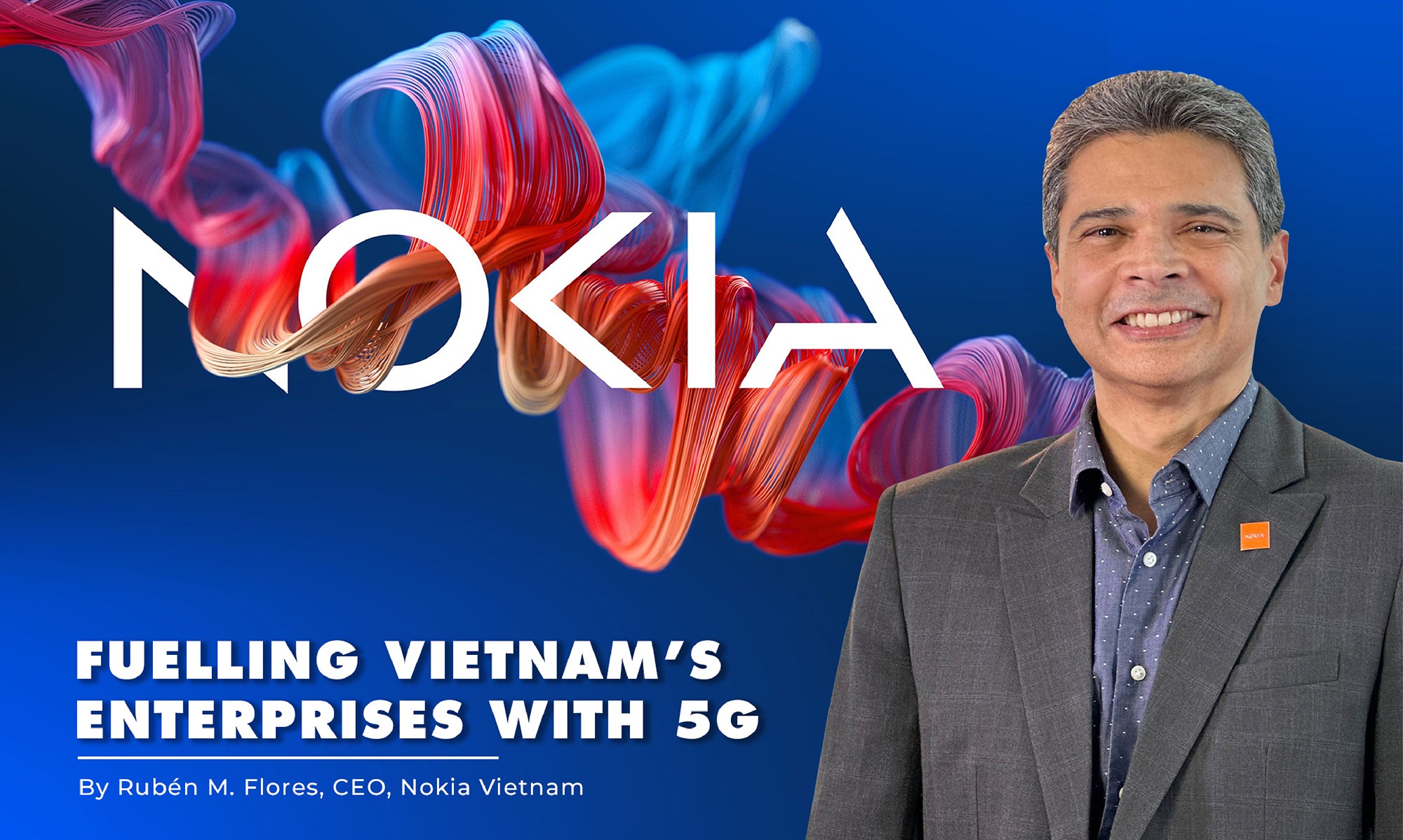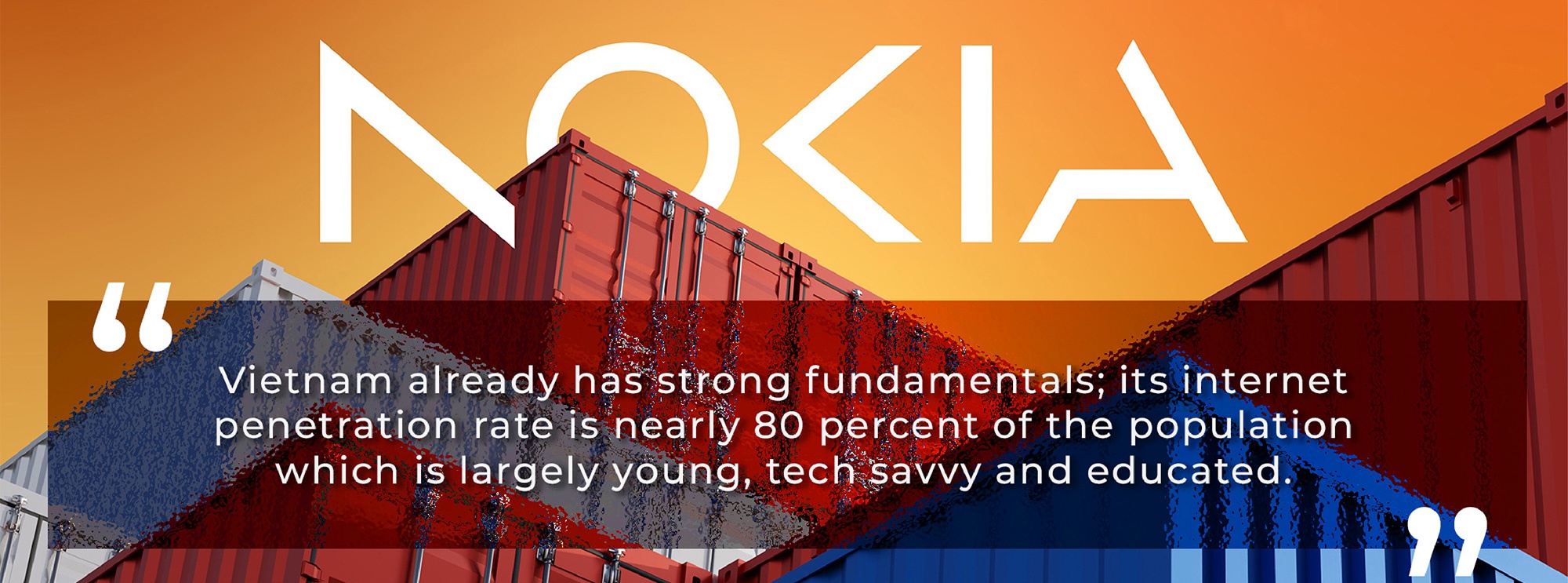
One of the first Southeast Asian nations to pilot 5G networks, Vietnam is now setting up the path to become home to one of the region’s first 5G-powered smart factories. The 5G advantage of ultra-high speeds, low latency, and the ability to support multiple connections will add a transformative layer to the country’s ever-growing sectors of trade and industry.
However, this is still just a taste of the true potential 5G offers for Vietnam’s businesses and society – especially given the sharp focus being placed on boosting its already-thriving digital economy. Indeed, Vietnam aims to ensure that the entire country benefits from the next 5G-led frontier of digital transformation.
This will go beyond adding more dynamism and resilience to large, physically intensive areas – such as manufacturing, ports, and agriculture – as well as smaller and more agile digital-first enterprises. The common thread linking all these sectors is communication services providers (CSPs), which play a critical role in delivering the high-performance 5G networks required to power the country’s digital ambitions.
Today, Vietnam is a crucial link in the world’s supply chain, being a key investment destination for some of the world’s most recognisable brands. However, maintaining its competitiveness – while also climbing up the global value chain – requires the country to achieve a new level of digitalisation and automation. This is because global markets are becoming more connected. With more goods being shipped worldwide, Vietnam’s supply chain stakeholders (i.e., retailers, factories, ports, and logistics companies) must adapt to changing levels of demand and supply while also reducing delivery time, waste, and costs. The pandemic also showed that the supply chain must be made more resilient to withstand severe periods of disruption. In the supply chain of the future, 5G and the Internet of Things can power sensors that can connect to almost anything. Processes that previously relied on manual input can be fully automated, while advanced applications of VR and AR can remove operators from the immediate vicinity. How does 5G provide the crucial edge? As more factories, warehouses, and ports (both sea and air) become more automated, operators can optimise their resources and reduce costs by migrating to edge computing – which can only be achieved via 5G’s ultra-low latency and ultra-high reliability. To illustrate, the bulk of computing power for autonomous robots and vehicles can be moved to the network core, which allows the robots and vehicles to be lighter, more agile, use less energy, and be less costly. Meanwhile, 5G-enabled deployments of VR/AR can be used for ultra-precise monitoring and in-built geo-positioning to help track assets, thus raising on-site efficiency. By investing in 5G and the technologies that can benefit most from its application, supply chain operators will play an important part in bringing Vietnam on par with the world in terms of digital transformation. This is particularly because Vietnam seeks to also move up the global value chain by focusing on innovation as well as research and development. A thriving digital economy is one where digitalisation is ubiquitous across all spheres of business and society. Vietnam already has strong fundamentals; its internet penetration rate is nearly 80 per cent of the population, which is largely young, tech-savvy, and educated. With much of Vietnam already familiar with digital technologies, it is little surprise that heightened digital experiences are becoming a core part of how businesses operate. One survey indicated that Vietnam ranked higher than the global average in terms of digitally transforming customer experiences and engagements. Concurrently, Vietnam – due in no small part to the government’s forward-looking digital economy policies – is also ramping up digital entrepreneurship by intensifying activity and investments in the startup sector. If Vietnam is to fully reap the benefits posed by 5G, CSPs must keep pace with evolving consumer and enterprise sets. 5G can connect to many sensors and devices, leading to a subsequent volume increase in data across networks. Here, CSPs can leverage 5G to provide real-time analytics at the network edge to optimise the user experience for ultra-low latency use cases – creating new revenue streams with partners and customers. As an example, cloud gaming – which is now taking root in Vietnam – requires low and consistent latency to ensure an enjoyable and fair user experience. Here, CSPs can share real-time network performance predictions so that gaming experiences can be managed consistently across networks. This creates opportunities such as a value-added service to cloud gaming companies, or to individual gamers as part of a gaming-themed 5G plan. Further boosting customer experience is by introducing on-demand network slicing, whereby customers can purchase and activate network slices on-demand from their CSP, which can be tailored to support specific use cases and various applications based on network performance, quality, traffic routing, latency, and security. For instance, a gamer could activate a new slice using local cloud gaming applications with enhanced network performance, low latency, and edge slicing. Meanwhile, sports event attendees could activate a 5G streaming slice to quickly access video replays of event highlights, additional content, and insights related to their favourite athletes and teams. For CSPs to help the nation achieve this potential, 5G networks must support massive increases in scale, which then requires an evolution in existing network architectures and the components they use. This is so that CSPs can deploy 5G networks quickly and with minimum total cost of ownership. Based on years of innovation from our Bell Labs research arm, Nokia has designed our ReefShark chipsets, especially for 5G network solutions. They are based on 3GPP 5G New Radio specifications to bring large-scale integration to new heights – packing more capabilities and functionality into smaller hardware. These chipsets embed the highest quality, performance and efficiency (especially in terms of energy consumption) to help open CSPs and their customers take advantage of a world of business opportunities that 5G will bring. Additionally, the advent of 5G-enabled innovations will also increase the surface area towards risks. Indeed, with 5G, vulnerabilities in the network may have more serious consequences, especially when compared to previous telecom generations – largely due to the diversity of use cases. As such, Nokia’s investment in chipset innovation enables intellectual property security to be built into routing nodes, offering protection against distributed denial-of-service attacks and inline filtering, in addition to providing encryption of network traffic. The path to Vietnam’s 5G-led digital transformation is bright, and Nokia stands ready to help the nation meet its fullest potential. We have been working with the country’s leading CSPs to help lay the foundations for sustained 5G growth by establishing base stations and forming collaborative ventures. We are cooperating with a local CSP to prepare the groundwork for the country’s ports, as well as homes and businesses, for wide-scale adoption. Change cannot happen in isolation, especially in the ever-evolving digital landscape, which is now grappling with the mainstreaming of 5G. Propelling Vietnam into a connected and prosperous future requires partnerships and collaborations – between the government, CSPs, technology providers, academic institutions, and enterprises – to ensure that the country’s digital ambitions will create an effective and wide-reaching impact on its businesses and Vietnamese society.




